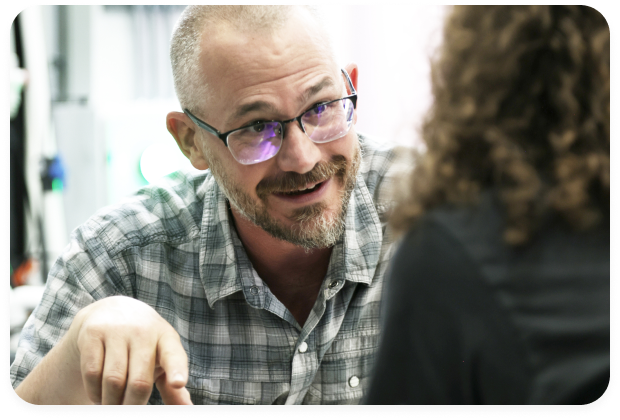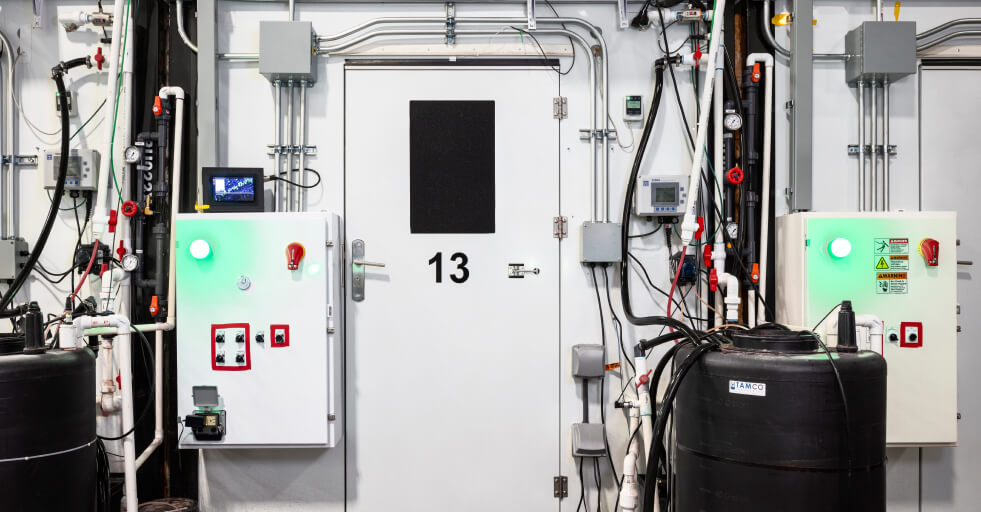We all love seeing a beautiful vegetable garden on a bright sunny day. So it’s natural to assume growing plants under sunlight is the best way to farm. So how is it possible for Plenty to grow fresh, flavorful produce at any time of the year whether it’s rain or shine outside? Part of the answer lies in the way that we use light.
Plants use photosynthesis to transform the electromagnetic energy of light into chemical energy, converting carbon dioxide and water to carbohydrates and oxygen. Photosynthesis is the foundation of all our food, and ultimately sustains life on earth.
Over the past eighty years scientific research has isolated the specific parts of the electromagnetic spectrum that have the most impact on photosynthesis, which is mostly light with a wavelength between 400 nm to 750 nm.
Plants don’t just use light to grow, they also have special receptors that can trigger other physical responses. For example, certain types of light can signal plants to produce leaves or flowers, to stretch out their stems, or even when to change color. Plants also use their sensitivity to specific wavebands of sunlight to measure day length which allows them to blossom in the spring and shed leaves in anticipation of shorter winter days.
While this knowledge about how plants use light to grow is not new, we could not benefit from it until the early 2000s when LEDs that could produce light in precise wavebands were manufactured. It’s these types of LEDs that we use at Plenty to deliver optimal light to every plant in our farm.
Not only does this mean that we’re not beholden to good weather to produce our crops, but we can use our LEDs to grow anywhere we have power and water, not just in the sunny climates where produce has conventionally been grown.
By growing indoors with LEDs, Plenty is able to unlock a plant’s full potential by providing the ideal wavelengths of light and for the right number of hours each day. Together with our other industry-leading technology, we can make sure each Plenty plant gets just what it needs to be its tastiest self every time.




